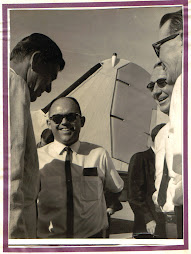
Hot stuff
It was encased in a granite base, the kind they made during the WPA or Conservation Corps years of the Depression.
The last time I remember seeing a source of water to cool a boiling radiator was on the way to Weaverville. Halfway up Buckhorn grade on Highway 299 there was a spring. probably Artesian water, that ran year-round.
It was encased in a granite base, the kind they made during the WPA or Conservation Corps years of the Depression.
I never needed to stop there to cool off the variety of vehicles I used in those years -- mostly older and ranging in size from a brace of Metropolitans to a Rambler American, to a stately 1955 Studebaker pickup truck with a hill holder to a borrowed Ford 100 pickup with a gasoline tank that sloshed liquid from side to side as the vehicle leaned into and out of curves.
About 20 years ago, someone in authority decided the water should be turned off. As I remember it, the action was not taken on a dry year or because the water no longer flowed beneath the ground.
To make sure motorists got the message, signs informing motorists of the spring in both directions were taken away The stone structure and the pipe that held the water were torn out, too.
Perhaps it was the advent of nearly universal use of cooling system liquid that spelled its doom.
Too bad.
With the demise of that spring, the last I have noticed in my travels around the state, some one of the truly reassuring fixtures of the highway died.
In those earlier days of driving when a trip into the mountains or across the desert was more of an adventure than the drudgery it is today, a source of water for the radiator was as important as that of the gas station.
Back then, one of the more enjoyable parts of the drive -- a good way of passing the time on a long trip -- was the conversation triggered when someone spotted an overheated car or truck at the side of the road.
The newer and more expensive the vehicle, the more comments. A new Cadillac or Lincoln drew quite a bit of derision while an older Ford or Chevrolet, expected to wind up there, were mentioned in more kindly tones that shared the misfortune of the drivers.
One of my favorite memories involving an overheated auto occurred at an important juncture in my career. I was riding up the Cajon Pass in a new Mercury Comet driven by the publisher of the Victor Press. About half-way up the pass, the Comet fell out of orbit, its radiator steaming as the publisher guided it onto the shoulder.
We were on our way to Victorville so I could look over the Victor Press and the town. I had been offered the job of editor at the twice-weekly newspaper. The publisher, also the general manager of the Ontario Daily Report, had offered me the job while I was a reporter at the Report.
Carlton Appleby proved just how cool he was when the radiator boiled. He didn't even get out of the car to open the hood, he just kept pitching the job to me. By the time engine had cooled off and we had topped the pass, I was pretty well sold on the job.
In addition to those welcome springs along the highways of the past, there were several other aids for those who ventured out on trips during hot weather.
People crossing the deserts could rent a device that sprayed water onto the radiator as you drove through the heat. They would hook it up for you on at Las Vegas or St. George, Utah, and take it off on the other side. My memory of the device is that you controled the water flow with a foot pump.

In addition, almost all desert travelers carried gallon canvas bags of water on the front bumpers of their cars. The water evaporating through the canvas kept cool for drinking or radiator.
Bag of cool water
Perhaps the neatest device of all was the window cooler, a scaled-down version of the swamp coolers I would learn to love in later, pre-airconditioning year in the desert.

You hooked the cooler onto the front passenger side window allowing an opening an inch or two deep for the air to blow in. You filled a small tank with water that would drip onto the excelsior. I can't remember if there was a fan or not, but the air blowing through the streamlined silver device made many of my earlier trips tolerable.
Most of the time back then, such cooling was available only when faced with treks across the burning sands. For those who lived in the Imperial Valley or say Bakersfield, there was only one type of relief during the hot weather: The 460 airconditioner.
That technique, not quite as efficient as the window swamp cooler, involved driving with all four windows cranked down and sailing along at 60 miles an hour, ergo the 460.
Although the advent of the airconditioner has made driving during the hot months much more comfortable, it is not nearly as interesting. The cooling spray from the window swamp cooler, the refreshing cool drink from the canvas bag and the entertainment offered by discussing stalled motorists or mechanics wrestling a water sprayer onto your car, those are all gone.
But they are not forgotten.


.jpg)
No comments:
Post a Comment